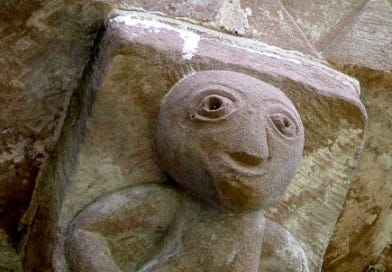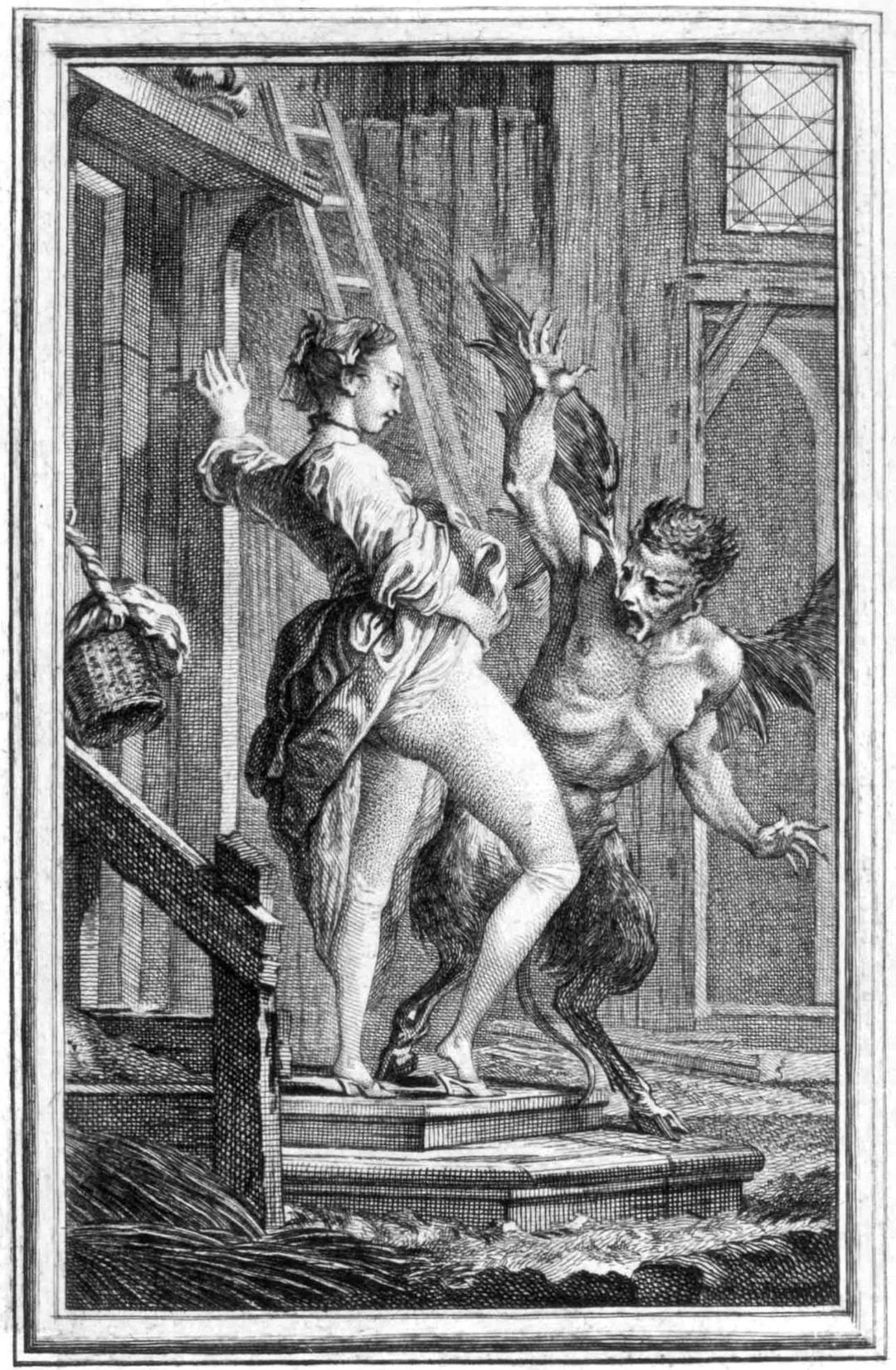Have you ever wandered into a church and found yourself under the brazen stone gaze of a leering sculpture, cheerily baring their vulva at you?
It might not sound like your typical churchgoing foray, but the fact is that churchgoers, whether ardent believers, the salvation-anxious, or casual sunny afternoon explorers, have been strolling in under exposed genitalia for centuries.
Sheela na gig’s are found throughout the UK and Ireland (there are around 124 in Ireland and 45 in the UK), with more scattered throughout Spain and France, usually on churches, cathedrals, or castles. They tend to depict naked forms performing sexually explicit gestures but in a distorted, exaggerated way, with the Irish and British examples typically showing women, and male figures more common in France and Spain.
There are two main schools of thought when it comes to their origin. One is that the carvings were pre-Christian fertility symbols, a hangover from the days of pagan idols and the mother goddess, and removed from their original homes to be added as material into churches as they were being constructed. Many sheela na gigs do appear to have been added at a later stage and made from a different material to the rest of the church, and we all know how much the Christian faith loved swallowing up choice morsels from existing religions to undermine them further down the track.
However, for many churches, the sheelas were part of the original fabric - commissioned by the priest as he chose the fittings and fixtures for his new holy enclave - much in the way that someone would pick and mix from Wren Kitchens today.
As churches were constructed, they were sold with a design in mind, “for so much money you would get so big a building and so much carving. Every sculpted capital and corbel employed a man’s time and skill and therefore cost so much - and blank ones were cheaper”1. Medieval stonemasons were paid by the piece of work they produced, so its unlikely that they would have been in the habit of spending days on a piece that hadn’t been paid for, in order to make a joke, or a political or moral stand.
While it might be difficult to imagine a religious leader specifically commissioning explicit sculptures today, many believe that these figurative carvings were meant to highlight the spiritual danger of sin and what a slippery slope lust could be. I do love this theory. One moment you catch yourself having a lusty thought, the next moment you’re pulling your labia apart and baring your teeth at people.
Many historians and researchers have pointed out that although the sheelas show quasi-erotic imagery, they generally come without conventional trappings of sexual enticement - most of the sculptures are brash and monstrous, with “repellant ugliness: huge disproportionate head, staring eyes, gaping mouth, wedge nose, big ears, bald pate, herculean shoulders and twisted posture.”2 Perhaps unsurprisingly, this quote was written by a man.
Whilst the true purpose of sheela na gigs is shrouded in mystery, there is something very strong and powerful about them, prancing in stone high up on holy walls, proudly displaying their genitals. The fact that they weren’t modelled after gendered ideals of female attractiveness makes them all the more emblematic of resistance and pride.
The sheela na gig is still used as a symbol of resistance, and still courts controversy. Instagram have been known to censor images of them, apparently assuming the same stance as the medieval church.
The brilliant Project Sheela document women’s history in Ireland by attaching ceramic sheelas at significant sites each International Women’s Day, from past PornHub offices to earlier Magdalene Laundries, to the site of the volunteer-run former Women’s Information Network Anonymous Telephone Line - which ran for almost ten years from the late 80’s, providing anonymous callers with information that they desperately needed to help them travel if they needed an abortion.
Project Sheela say, “Sheela appears in locations related to both historic and current issues, and draws attention to areas that still need progress, change or revolution. The treatment of women in Ireland's recent history is more than often dark, grim and tragic, with lots of open wounds. Project Sheela hopes to heal some of those wounds and to promote an attitude towards women and their sexuality that is positive and empowering.”3
The power in a confidently bared vulva is palpable, and has featured throughout history, from Russian folklore stating that a bear will run back into the woods if a woman lifts her skirts towards it, to Plutarch’s writings of “a vulva-displaying incident where a large group of women lifting their gowns together changed the outcome of a war'.”4
The Marquesas Islands in Polynesia have the reverent tradition of a naked woman sitting on the chest of the possessed during an exorcism, and we see past customs all over the world of women blessing crops with their vulvas in order to promote fecundity and fertility of the land.
My personal favourite tale is shown in this 1896 illustration, where a woman flashes the devil in order to save her husband’s soul. The story goes that her husband sold his soul to the devil, and when the devil came to collect, while her husband hid and cowered, she showed her vulva and told the devil what a dangerous man her husband was and that he wasn’t to be crossed, for look at this hideous gash he’d given her 🙃
Anthony Weir and James Jerman, Images of Lust: Sexual Carvings on Medieval Churches, B.T Batsford Ltd, London, 1986, p8
Anthony Weir and James Jerman, Images of Lust: Sexual Carvings on Medieval Churches, B.T Batsford Ltd, London, 1986, p11
https://www.projectsheela.com/
Catherine Blackledge, Raising the Skirt: The Unsung Power of the Vagina, Orion Publishing, 2020









Amy, this is incredible- so informative and interesting, your wit and depth of knowledge shine through.#Sheela4eva